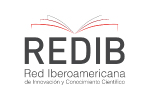Guidelines for authors
Manuscript form and preparation
Pucara publishes unpublished articles, which will be submitted for evaluation according to point 2 of the publication guidelines. Those interested in publishing in Pucara should take into account the following considerations:
1. Three types of papers are subject to evaluation:
Type A: Articles on theoretical, critical or essayistic aspects related to the humanities and education.
Type B: Reviews of books or documents related to theory, research or literary creation.
Type C: Creation.
2. Type A papers are considered theoretical or essayistic research products and bibliographical reviews on the current state of knowledge on a given topic. Priority will be given to original research reports that constitute a significant contribution to the specific field on which they are based.
3. Papers must be unpublished, written in the language they deal with, and not be under simultaneous evaluation in another journal. This template will be used for the submission of the manuscript, prior to review by the reviewers.
4. Type A papers will have a maximum length of 20 pages, and type B papers will not exceed six pages.
5. Materials should be submitted in A4 format, double-spaced, single-sided, with margins of three centimeters at the top, bottom and sides, and in Times New Roman font size 12, through the submission platform. In order to guarantee anonymity during the arbitration process, the identification of the author(s) will appear only on the first page.
6. Type A papers that the Editorial Board considers potentially suitable for publication will be submitted to double blind refereeing by independent specialists, who will propose that the paper be published with or without modifications, or that it not be published. In case of discrepancy between the referees, the paper will be sent to a third party and the decision will be made by majority vote. If, in the opinion of the referees, the paper can be published with modifications, it will be promptly returned to the author with the referees' observations, who will then have one month to resubmit the corrected paper. If it is not received within this period, the Editorial Committee will assume that the author has withdrawn his/her intention to publish in the Journal.
7. Type B papers will be reviewed by the Editorial Board, which will decide on their publication.
8. In the first two types of papers, the author(s) agree to accept the changes that the referees or the Editorial Board deem appropriate.
9. Authors of papers not accepted for publication will be notified in due time of the referees' decision, but the originals will not be returned to them.
10. Type C papers will be reviewed by the Editorial Board, which will decide on their publication.
How to submit originals
Articles:
1. Initial page. It should include: a) title of the paper (if possible no longer than thirteen words) in Spanish, English and Portuguese; b) date of completion of the paper; c) name(s) of the author(s); d) institutional affiliation; e) addresses (personal and work), telephone numbers and e-mail addresses.
2. Abstract. The abstract, the abstract (English version of the abstract) and the resumo (Portuguese version of the abstract) should be included on separate page(s). The length of each should be between 100 and 150 words transcribed single-spaced. Three to five key words should be included at the end of the paper. Whenever possible, the order should be, from left to right, from the most general to the most specific.
3. Acknowledgements. If there are any, they should be placed at the end of the article content before the References. This is also the place where the author will give notice (if desired) of any grants, scholarships or funding received for the development of the research.
The structure of the theoretical or essay reviews will have a freer character. However, it should follow a logical expository order and be divided into titled (and, if necessary, subtitled) parts that allow the contents of the article to be followed in an orderly fashion.
Headings should be in upper and lower case and subheadings in italics.
4. Text. It should start from the third page. The articles that expose the results of a research must contain clearly defined the structure of a coherent plan: Introduction (problem statement, objectives, justification, theoretical positioning...), Development, Conclusions and Bibliography. Each author is free to amalgamate or subdivide these categories, but they must be present in some way as a sign that the research conforms to the general patterns of science.
5. The structure of the theoretical or essayistic reviews will have a freer character. They should, however, follow an equally logical expository order and be divided into titled (and, if necessary, subtitled) parts that allow the content of the article to be followed in an orderly fashion.
6. The headings within the text indicate its organization and establish the importance of each topic. All parts of equal importance should have the same level of heading throughout the text. Arabic characters followed by a period shall be used in the main parts (1. 2. 3.) and the subsections shall begin with the number of the major section of which they are a part followed again by Arabic numerals separated by periods (1.1., 1.2., 1.2.1., 1.2.2.2.).
7. Headings should be in upper and lower case and subheadings in italics.
8. Citations and references should conform to the standards of the American Psychological Association (APA, 7th edition). Some of the most common ones are described below:
8.1. All citations will be incorporated into the text; consequently, none will appear in footnotes.
8.2. When quotations contain less than forty words, they shall be included in the corresponding paragraph and between quotation marks ("..."). In case of forty or more words, they will form a separate paragraph with indentation of five spaces in both margins, without quotation marks and written in double line spacing. If an author is paraphrased, the corresponding credit must be given. In all cases, the year: page system should be used and the complete reference should be included in the bibliography.
8.3. References should be listed at the end of the paper in alphabetical order. All authors and works cited should appear. References to authors or publications not mentioned in the body of the article should not be included.
8.4. Illustrations, tables and/or figures (graphs, drawings or photographs) should be limited to the smallest possible number. They should be presented in black and white, and should be numbered consecutively and listed in that order within the article, with appropriate text headings, explanatory legends and sources. The Editorial Board may decide on the placement of illustrations, tables and/or figures according to the needs of layout.
Reviews:
Reviews or reviews constitute news about the publication of recently published books or papers. They may be simply descriptive, but it is recommended that they include some critical commentary, since their purpose is to orient the reader. Whenever possible, they should be accompanied by a clear black and white reproduction of the front and back cover of the book, document or publication, or a clear black and white photograph of the material, instrument or equipment to which they refer.
As with articles, a separate title page will be included containing a) the date of completion of the review, b) the author's name, c) the institution to which he/she is attached, and d) his/her addresses (home and work), e-mail and telephone numbers.
Creation:
These are short literary texts (poetry or short story) that do not exceed 1 500 words. The information requested for articles and reviews will be included.
Final information:
1. All works will include on a separate sheet a brief curriculum vitae of the author(s) with an extension of ten lines, describing his/her academic and professional profile, as well as his/her main lines of research.
2. Papers that do not conform to these rules, both in substance and in form, will not be considered for the refereeing process.
Refereeing system and selection of articles. Articles received are submitted to the Editorial Board for consideration.
Notification to authors. Authors will be notified of the receipt of the paper and, subsequently, if it was selected by the Editorial Board for publication.
Order of publication of papers. The order of publication of the articles will be at the discretion of the Editor.











